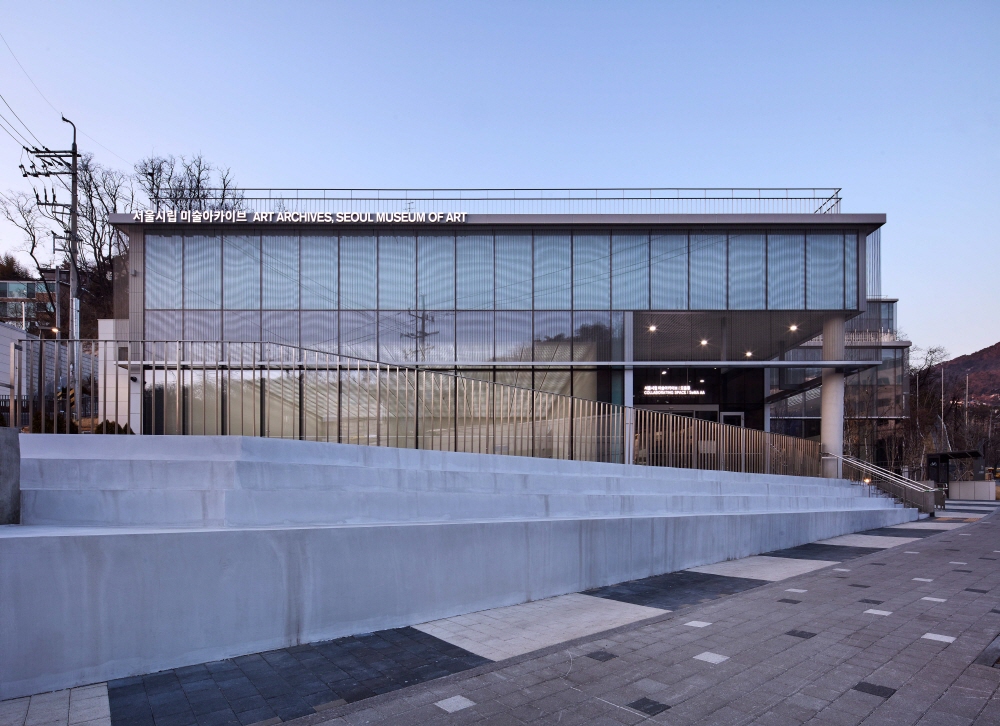SPACE May 2023 (No. 666)
 View of Art Archives Seoul Museum of Art / ⓒKim Yongkwan
View of Art Archives Seoul Museum of Art / ⓒKim Yongkwan
On Apr. 4, Seoul Museum of Art opened Art Archives Seoul Museum of Art (hereinafter Art Archive) in Pyeongchang-dong, Jongno-gu. Art Archive, the new annex of Seoul Museum of Art is the first national and public art museum specialising in archives that collect, preserve, research, and exhibit contemporary art. The design of the Art Archive, with a land area of 7,300㎡ and a total floor area of 5,590㎡ was undertaken by Arcbody Architects, the winning firm of the 2017 design competition. The Art Archive is composed of three buildings according to its main programmes. The Collaborating Space is for preservation, research, and exhibitions, which is the main programme of the Art Archive. On the first and second floors, there are exhibition halls and a reference library. The research lab is placed on the third floor, and storage facilities are placed from the second floor to the fourth floor. The reference library, where people can freely read art books, has about 4,500 art books published domestically and internationally. It covers a wide range of books, from art catalogues that are difficult to access in general libraries, to art books, independent publications, and children’s books. Research lab provides original work viewing services for 20,000 items that have completed the archiving process out of 57,000 collections in the Art Archive. Various educational programmes expected to be hosted in the Learning Space, and there will be public events such as academic talks and performances in the Exchange Space. The opening ceremony exhibition ‘Cheerful Learning, Delightful Knowledge, Joyful Knowing’, which presents the personal collection of books and objects of Choi Min (1944~2018), an art critic, translator, and poet, is now on display. Archives are meaningful in that they are not simply records of the past, but materials that contribute to finding the intersection of information and knowledge through the process of interpretation. The Art Archive plans to establish a new framework for understanding contemporary art by operating exhibitions, education, and research programmes through the archival holdings, and establishing relationships with citizens and students as well as experts. by Kim Jia





